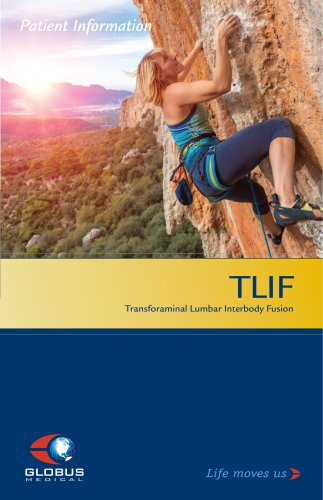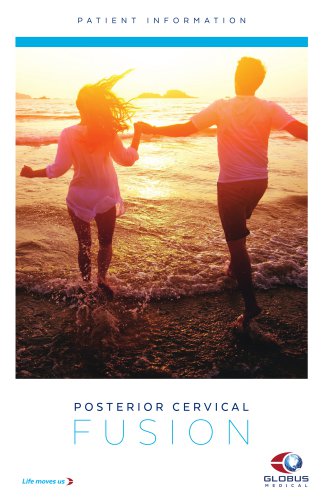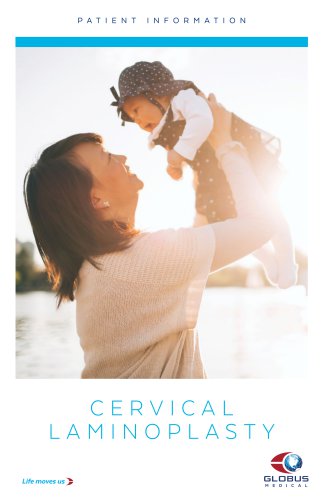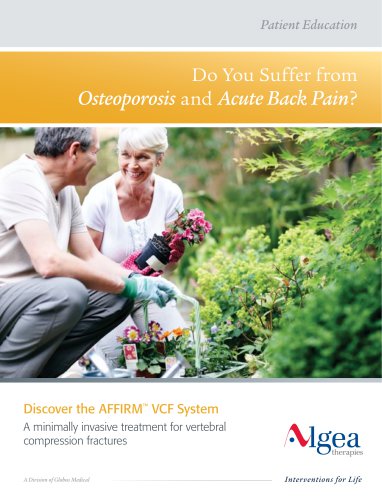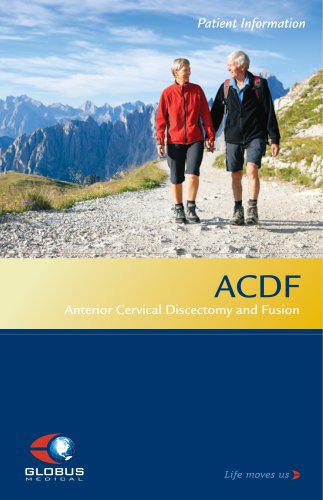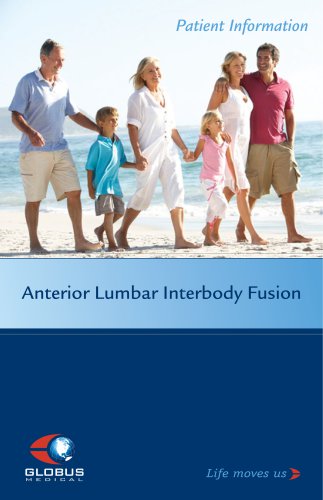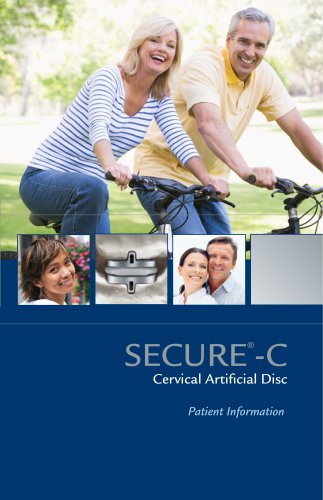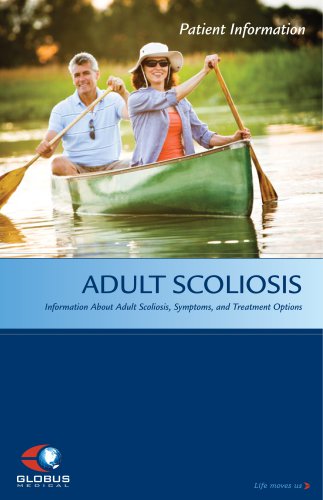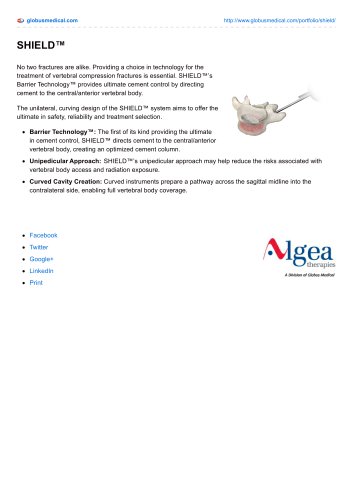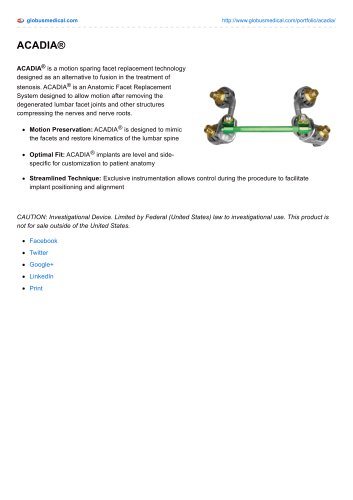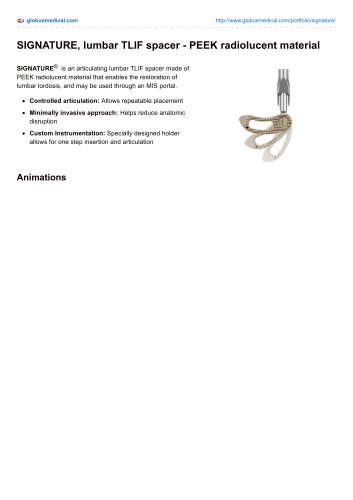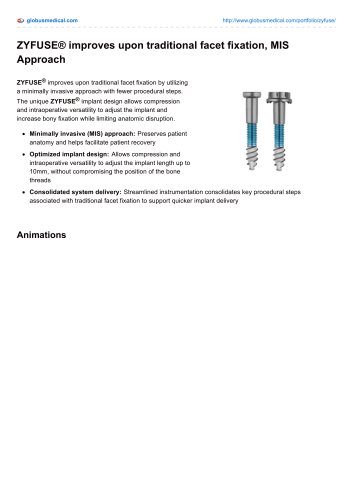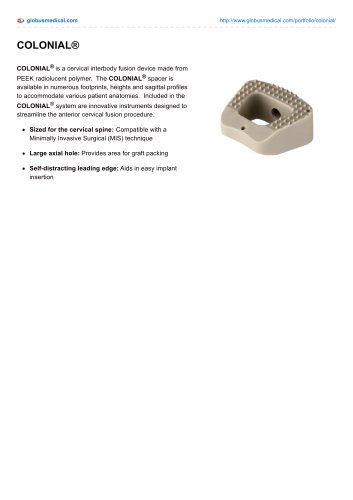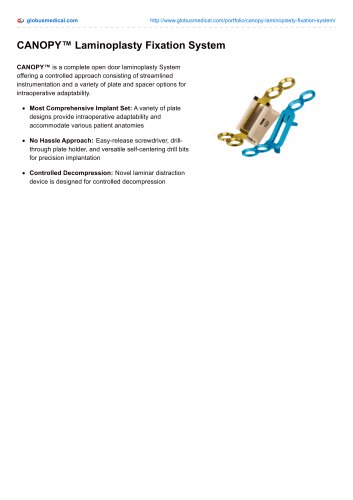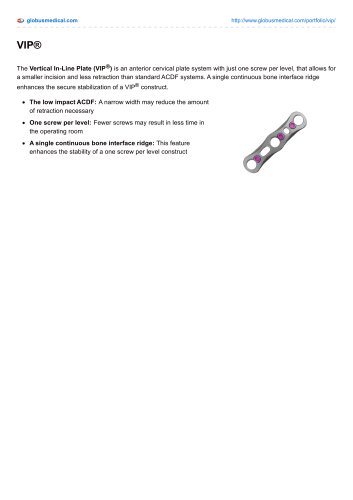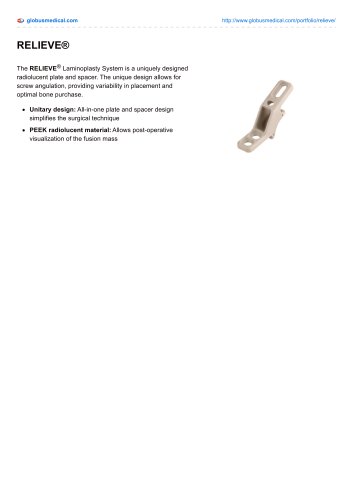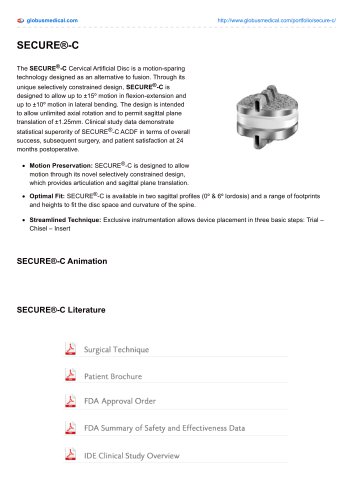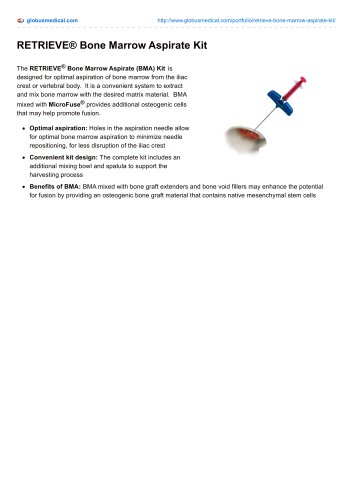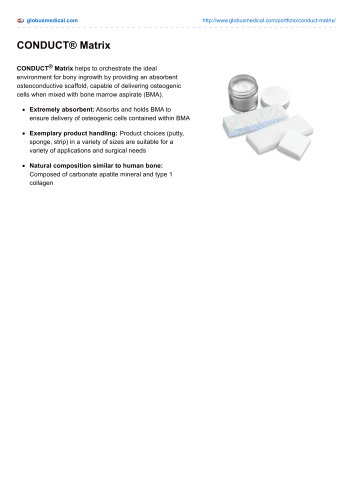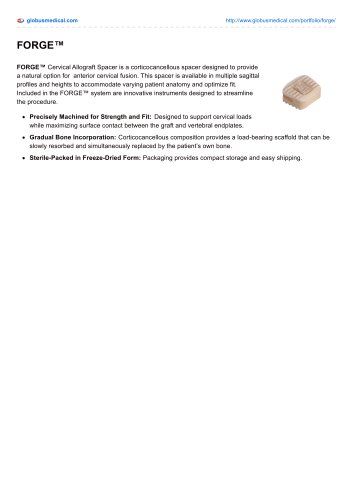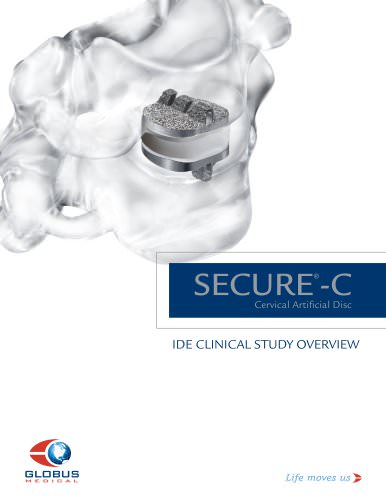
Catalog excerpts
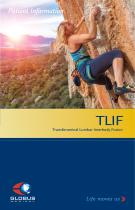
Patient Information Transforaminal Lumbar Interbody Fusion
Open the catalog to page 1
TLIF Table of Contents Anatomy of the Spine. . . . . . . . . . . . . . . . . . . . . . . . . . . . . . . . . . . . . . . . . . . 2 General Conditions of the Spine. . . . . . . . . . . . . . . . . . . . . . . . . . . . . . . . . 4 TLIF Procedure. . . . . . . . . . . . . . . . . . . . . . . . . . . . . . . . . . . . . . . . . . . . . . . . . 7 Postoperative Expectations. . . . . . . . . . . . . . . . . . . . . . . . . . . . . . . . . . . . . . 8 The decision to receive medical treatment is individualized to the patient and the patient’s symptoms. The information presented within this brochure...
Open the catalog to page 3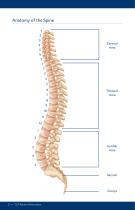
Cervical Area Thoracic Area TLIF Patient Information
Open the catalog to page 4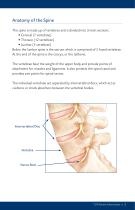
Anatomy of the Spine The spine is made up of vertebrae and is divided into 3 main sections: • Cervical (7 vertebrae) • Thoracic (12 vertebrae) • Lumbar (5 vertebrae) Below the lumbar spine is the sacrum which is comprised of 5 fused vertebrae. At the end of the spine is the coccyx, or the tailbone. The vertebrae bear the weight of the upper body and provide points of attachment for muscles and ligaments. It also protects the spinal canal and provides exit points for spinal nerves. The individual vertebrae are separated by intervertebral discs, which act as cushions or shock absorbers...
Open the catalog to page 5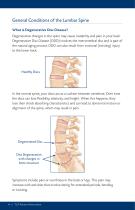
General Conditions of the Lumbar Spine What is Degenerative Disc Disease? Degenerative changes in the spine may cause instability and pain in your back. Degenerative Disc Disease (DDD) involves the intervertebral disc and is part of the natural aging process. DDD can also result from torsional (twisting) injury to the lower back. Healthy Discs In the normal spine, your discs act as a cushion between vertebrae. Over time the discs can lose flexibility, elasticity, and height. When this happens, they lose their shock absorbing characteristics and can lead to abnormal motion or alignment of...
Open the catalog to page 6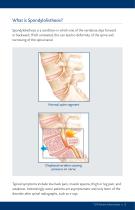
What is Spondylolisthesis? Spondylolisthesis is a condition in which one of the vertebrae slips forward or backward. If left untreated, this can lead to deformity of the spine and narrowing of the spinal canal. Normal spine segment Displaced vertebra causing pressure on nerve Typical symptoms include low back pain, muscle spasms, thigh or leg pain, and weakness. Interestingly, some patients are asymptomatic and only learn of the disorder after spinal radiographs, such as x-rays. TLIF Patient Information
Open the catalog to page 7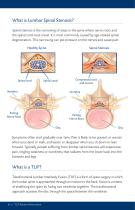
What is Lumbar Spinal Stenosis? Spinal stenosis is the narrowing of areas in the spine where nerve roots and the spinal cord must travel. It is most commonly caused by age-related spinal degeneration. This narrowing can put pressure on the nerves and cause pain. Healthy Spine Spinal cord Spinal Stenosis Spinal canal Compressed cord and nerves Vertebra Exiting Nerve Root Exiting Nerve Root Disc Symptoms often start gradually over time. Pain is likely to be present or worsen when you stand or walk, and lessen or disappear when you sit down or lean forward. Typically, people suffering from...
Open the catalog to page 8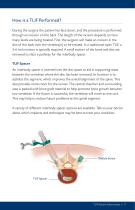
How is a TLIF Performed? During the surgery the patient lies face down, and the procedure is performed through an incision on the back. The length of the incision depends on how many levels are being treated. First, the surgeon will make an incision in the skin of the back over the vertebra(e) to be treated. In a traditional open TLIF, a 3-6 inch incision is typically required. A small section of the bone and disc are removed to clear a pathway for the interbody spacer. TLIF Spacer An interbody spacer is inserted into the disc space to aid in supporting areas between the vertebrae where the...
Open the catalog to page 9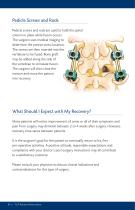
Pedicle Screws and Rods Pedicle screws and rods are used to hold the spinal column in place while fusion occurs. The surgeon uses medical imaging to determine the precise screw location. The screws are then inserted into the vertebrae to be fused. Bone graft may be added along the side of the vertebrae to stimulate fusion. The surgeon will then close the incision and move the patient into recovery. What Should I Expect with My Recovery? Many patients will notice improvement of some or all of their symptoms and pain from surgery may diminish between 2 to 4 weeks after surgery. However,...
Open the catalog to page 10
TLIF Patient Information
Open the catalog to page 11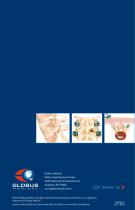
GLOBUS MEDICAL Globus Medical Valley Forge Business Center 2560 General Armistead Avenue Audubon, PA 19403 www.globusmedical.com Life moves us ©2017 Globus Medical. All rights reserved. Patents pending. Life moves us is a registered trademark of Globus Medical. Caution: Federal (USA) Law Restricts this Device to Sale by or on the Order of a Physician.
Open the catalog to page 12All Globus Medical catalogs and technical brochures
-
Discover the SHIELD™ VCF System
20 Pages
-
POSTERIOR CERVICAL FUSION
12 Pages
-
ExcelsiusGPS
12 Pages
-
CERVICAL LAMINOPLASTY
14 Pages
-
Discover the AFFIRM™ VCF System
20 Pages
-
SECURE-C®
24 Pages
-
ACDF
16 Pages
-
SI-LOK™
12 Pages
-
TRANSITION
12 Pages
-
complete bone graft
1 Pages
-
SP-Fix
12 Pages
-
SECURE®-C
24 Pages
-
Adolescent Idiopathic Scoliosis
16 Pages
-
ADULT SCOLIOSIS
16 Pages
-
MIS LLIF
16 Pages
-
MIS TLIF
12 Pages
-
MONUMENT
2 Pages
-
CREO AMP® Threaded
1 Pages
-
CREO MCS?
2 Pages
-
SHIELD?
1 Pages
-
ACADIA®
1 Pages
-
SIGNATURE®
1 Pages
-
SUSTAIN® & SUSTAIN®-R, Arch
1 Pages
-
TRUSS®
1 Pages
-
XPand®-R
1 Pages
-
ZYFUSE®
1 Pages
-
COLONIAL®
1 Pages
-
VIP®
1 Pages
-
PROVIDENCE?
1 Pages
-
RELIEVE®
1 Pages
-
ASSURE®
1 Pages
-
SECURE®-C
2 Pages
-
COALITION®
1 Pages
-
CAPITOL?
1 Pages
-
LATIS
3 Pages
-
CONDUCT® Matrix
1 Pages
-
FORGE?
1 Pages
-
SECURE®-C technical overview
12 Pages

